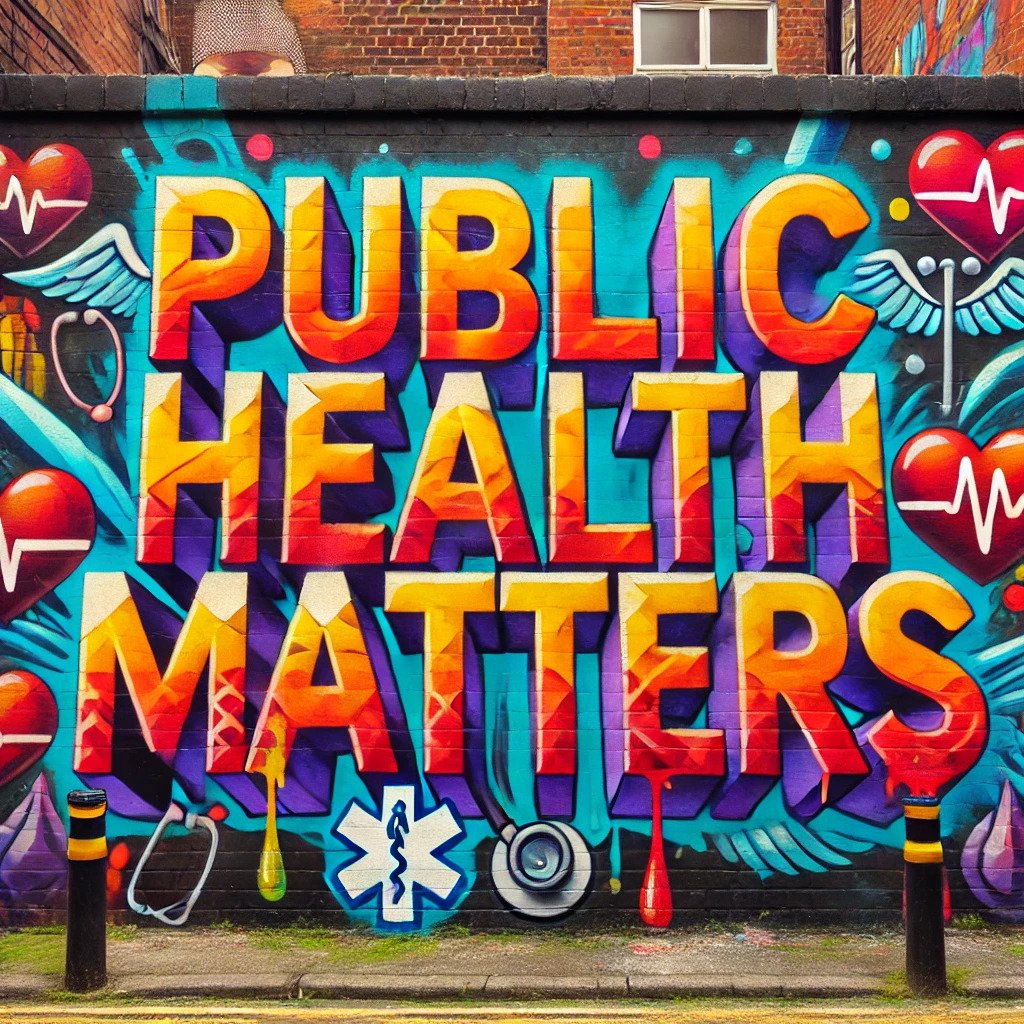The Complete Guide to Building an Effective Public Health Campaign (With Real Examples)
Public health campaigns play a critical role in improving community well-being, preventing disease, and helping people access essential services. But with crowded media channels and attention shrinking by the year, it’s harder than ever to deliver messages that make your public health campaign break through.
This guide walks through what makes a public health campaign successful, examples of proven strategies, and why place-based advertising has become one of the most effective solutions for reaching audiences where they live, work, learn, and gather.
Whether you’re a state health department, nonprofit, healthcare system, or agency partner, this guide will help you plan smarter and execute with impact.
What is a Public Health Campaign?
A public health campaign is a coordinated communication effort designed to influence behaviors, attitudes, or knowledge that affect community health. These campaigns typically focus on:
Preventing disease
Encouraging healthy behaviors
Increasing awareness of risks
Connecting people to resources
Improving access to services
Examples include anti-vaping campaigns, mental health awareness messaging, seatbelt safety, COVID-19 communication, and maternal/child health programs.
Effective campaigns combine evidence-based messaging, trusted delivery channels, and audience-specific targeting to ensure that the right people receive the right information at the right time.
Core Elements of a Successful Public Health Campaign
1. Clear Objectives
Every campaign needs a measurable goal. Examples:
Reduce youth vaping by X%
Increase awareness of 988 in rural communities
Drive enrollment in nutrition programs like WIC or SNAP
Educate parents on newborn screening or immunizations
2. Defined Audience Segments
Public health campaigns are most effective when they speak directly to the people who need the message:
Teens and young adults
Parents and caregivers
Older adults
Veterans and military families
Low-income households
Community members in rural or underserved areas
Audience segmentation allows messaging to be tailored, culturally competent, and locally relevant. View some of the popular audiences here.
3. Evidence-Based Messaging
The best campaigns rely on:
Behavioral science frameworks
Health literacy guidelines
Culturally relevant communication
Clear calls to action
Messages should be short, accessible, and actionable.
4. Strategic Media Placement
The channel you choose matters just as much as the message itself.
Traditional broadcast media can be valuable, but many health organizations now rely on place-based media — posters, digital screens, standees, and take-one materials placed inside the exact venues where people are making health decisions.
This includes:
Community health clinics
Pharmacies
C-stores
High schools and colleges
WIC/SNAP centers
Recreation centers
Barbershops & salons
Bars & restaurants
Senior centers
These environments offer high frequency, low waste, and hyper-local reach — perfect for public health campaigns.
5. Measurement & Evaluation
Great campaigns build in measurable signals, such as:
QR code scans
Call center volume
Increases in program enrollment
Website sessions from geofenced audiences
Patient recall studies
Pre/post awareness surveys
Combined, these metrics validate impact and guide future strategy.
Importance of Successful Public Health Campaigns
Public health campaigns are essential tools for improving population health, promoting disease prevention, and delivering clear, actionable public health messaging to communities. These campaigns help address chronic diseases, infectious outbreaks, mental health challenges, substance-use prevention, and other urgent health priorities. Effective public health campaigns increase awareness, empower individuals with reliable information, and encourage healthier behaviors that can reduce healthcare costs and improve long-term community well-being.
A strong public health campaign also builds community engagement and shared responsibility. When public health messages are culturally relevant, localized, and easy to understand, they inspire people to take action—protecting not only their own health but also the health of their families and neighbors. This community-driven approach strengthens trust, increases participation in local health programs, and supports sustainable behavior change across diverse populations.
Doctors’ offices, clinics, and healthcare waiting rooms are among the most effective locations for delivering public health campaigns. Because health is already the focus in these settings, patients are more receptive to educational materials. Posters, brochures, digital screens, and waiting-room signage can communicate important information about preventive care, chronic condition management, immunizations, screenings, and emerging health threats. For physicians and healthcare providers, these campaigns reinforce clinical guidelines and prompt proactive conversations, making clinics a high-impact environment for place-based public health messaging.
Public health campaigns also perform exceptionally well in schools, grocery stores, retail locations, pharmacies, gyms, and community centers. These high-traffic environments provide repeated exposure to key messages and reach people during everyday activities, where health decisions often begin. Schools help shape healthy behaviors early in life; grocery stores and pharmacies reach families making nutrition and wellness choices; gyms and community centers connect with health-conscious audiences or individuals seeking support resources. Using these place-based venues allows health departments and organizations to maximize visibility, reach underserved communities, and deliver high-frequency public health messaging that drives measurable results.
In addition to influencing individual behavior, successful public health campaigns also shape policy and support systemic change. When awareness increases and communities rally around a health issue, policymakers are more likely to allocate funding, implement new programs, update regulations, or invest in long-term health infrastructure. This makes public health campaigns a critical driver of both immediate outcomes and long-term improvements in health systems, community resources, and population-level health metrics.
Public health campaigns at clinics and doctor’s offices can be a helpful way to educate patients and physicians about best practices for public health.
Critical Elements of Successful Public Health Campaigns
Several key elements must be in place to create a successful public health campaign. First and foremost, clarity of purpose is essential. A well-defined objective guides every aspect of the campaign, from messaging to evaluation. Campaigns should have specific goals, such as increasing vaccination rates, promoting healthy eating, or reducing smoking prevalence. Clear objectives make it easier to measure success and adjust strategies as needed.
Another critical element is developing a strategic plan encompassing all campaign stages. This includes conducting thorough research to understand the health issue, identify the target audience, and recognize existing barriers to change. The plan should outline the timeline, resources, and key performance indicators that will be used to evaluate the campaign's effectiveness. By taking a comprehensive approach, campaign leaders can better prepare to address potential challenges during implementation.
Finally, successful public health campaigns require ongoing evaluation and adaptation. Continuous monitoring of campaign activities and outcomes allows organizations to assess what is working and what isn’t. Feedback from the target audience can provide invaluable insights that inform adjustments to messaging, tactics, and outreach efforts. By remaining flexible and responsive to the community's needs, public health campaigns can enhance their effectiveness and achieve a more significant impact over time.
Understanding Target Audiences in Public Health Campaigns
Understanding the target audience is a cornerstone of any effective public health campaign. Each demographic group may have different needs, beliefs, and behaviors influencing their health choices. Therefore, audience segmentation is essential. This process involves dividing the broader population into smaller groups based on shared characteristics such as age, gender, socioeconomic status, and cultural background. By identifying these segments, campaign leaders can tailor their messaging and strategies to resonate more deeply with each group.
Moreover, engaging with the community directly through surveys, focus groups, or interviews can provide valuable insights beyond quantitative data. Understanding cultural norms and values is particularly important, as these factors can significantly influence health choices and behaviors.
You can learn about the various audiences of our public health marketing campaigns within the audiences section of our website. Some primary demographics we’ve customized our network to reach are Hispanic/Latin-X, BIPOC/African American, Women Children, Youth/Teen, and more.
Types of Public Health Campaigns
Public health campaigns come in various forms, each designed to address specific health issues and reach targeted audiences effectively.
Awareness campaigns are among the most common, aiming to educate the public about pressing health concerns such as chronic diseases, mental health, or substance abuse.
Behavioral change campaigns focus on encouraging individuals to adopt healthier lifestyles, like quitting smoking, increasing physical activity, or practicing safe sex.
Advocacy campaigns seek to influence policies and community actions, often spotlighting systemic health disparities or lobbying for legislative reforms.
Place-based campaigns that utilize localized out-of-home (OOH) media to deliver tailored health messages within high-risk areas, such as promoting vaccination clinics in underserved neighborhoods or warning about fentanyl dangers in nightlife venues. These diverse strategies enable public health initiatives to meet communities where they are and drive impactful change.
Public health campaigns enhance the well-being of communities, improve the overall quality of life, and foster healthier, more informed populations. By addressing critical issues such as disease prevention, mental health awareness, and access to care, these initiatives empower individuals with the knowledge and resources to make healthier choices. Additionally, they contribute to reducing health disparities, strengthening community resilience, and promoting long-term societal benefits such as increased productivity and economic stability.
Public Health Social Media Campaigns
Public health social media campaigns are a powerful tool for educating communities, promoting healthy behaviors, and raising awareness about critical health issues. By leveraging popular platforms like Facebook, Instagram, TikTok, and X (formerly Twitter), these campaigns can quickly disseminate information to a wide audience, encouraging engagement through visually appealing content, interactive posts, and relatable storytelling. Effective campaigns often target specific demographics by using culturally relevant messages and addressing pressing public health concerns such as vaccination, substance use prevention, mental health awareness, and chronic disease management. Additionally, these campaigns can foster community dialogue, debunk misinformation, and provide access to valuable resources, ultimately driving positive behavioral change and improving overall public health outcomes.
Integrating Out-of-Home (OOH) with Social Media for Public Health Social Media Campaigns
Integrating out-of-home (OOH) advertising with social media campaigns can significantly enhance a brand's reach and engagement, particularly among younger demographics. A study conducted by Facebook in collaboration with Kantar and Accenture revealed that combining OOH with Facebook ads extends campaign reach to broader and younger audiences, proving to be 13% more efficient than using either channel independently. Furthermore, nearly 4 in 10 U.S. adults reported visiting a Facebook Page or posting on Facebook after encountering an OOH ad, and 25% engaged similarly on Instagram. These findings underscore the complementary nature of OOH and social media, suggesting that their integration can effectively influence consumer behavior and drive both online engagement and real-world actions
Pairing OOH advertising with social media campaigns creates a synergistic effect that amplifies reach, engagement, and impact. By leveraging the strengths of both channels—OOH’s ability to capture attention in physical environments and social media’s capacity to drive digital interaction—brands and public health initiatives can maximize their influence. Research from Facebook highlights how this combination not only broadens audience exposure but also encourages further online engagement, ultimately leading to stronger brand recall and positive behavior change. As media landscapes continue to evolve, integrating OOH with social media will remain a valuable strategy for creating more impactful and measurable campaigns.







